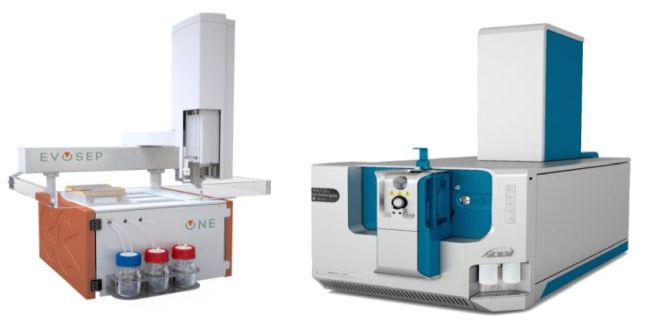
Analyzing large sample cohorts is critical when performing translational or biomarker research. To meet the sample introduction demands of high-throughput proteomics, the Evosep One system (Evosep) has been developed a standardized platform with preset methods. But faster chromatography quickly overwhelms traditional data dependent acquisition (DDA). Here using Zeno SWATH DIA – a data independent acquisition strategy, the combination of the Evosep One system and the ZenoTOF 7600 system was investigated for fast quantitative proteomics.
Introduction
Identifying and quantifying large numbers of proteins and peptides are important in translational research to understand biological functions. One example of this is the analysis of large sample cohorts to identify robust biomarkers of disease. The complexity of biological fluids, tissues and cell lines often overwhelms the capabilities of data-dependent acquisition (DDA) strategies using mass spectrometry due to the stochastic nature of this methodology. This limitation has driven the rapid adoption of data-independent acquisition (DIA or SWATH DIA) approaches, such as Zeno SWATH DIA. This method achieves 5-6x more MS/MS sensitivity,1 resulting in this DIA approach surpassing DDA for protein identifications and quantification in complex matrices. This advantage is further observed at short acquisition times that are required to meet the throughput demands of current proteomics studies.2,3
To meet the demands of high-throughput proteomics, the Evosep One system (Evosep) provides standardized liquid chromatography with preset methods and disposable trap columns. The system is optimized such that the user selects the number of samples to run per day (SPD) to determine the column, flow rates and run times necessary for analysis. The system is highly reproducible, robust and offers high MS utilization. These system features are ideal for applications in high-throughput laboratories.
Here, the combination of the Evosep One system and the ZenoTOF 7600 system was investigated for fast quantitative proteomics. Zeno SWATH DIA was used to investigate the numbers of proteins that can be detected and robustly quantified at varying SPD throughputs (Figure 1).





